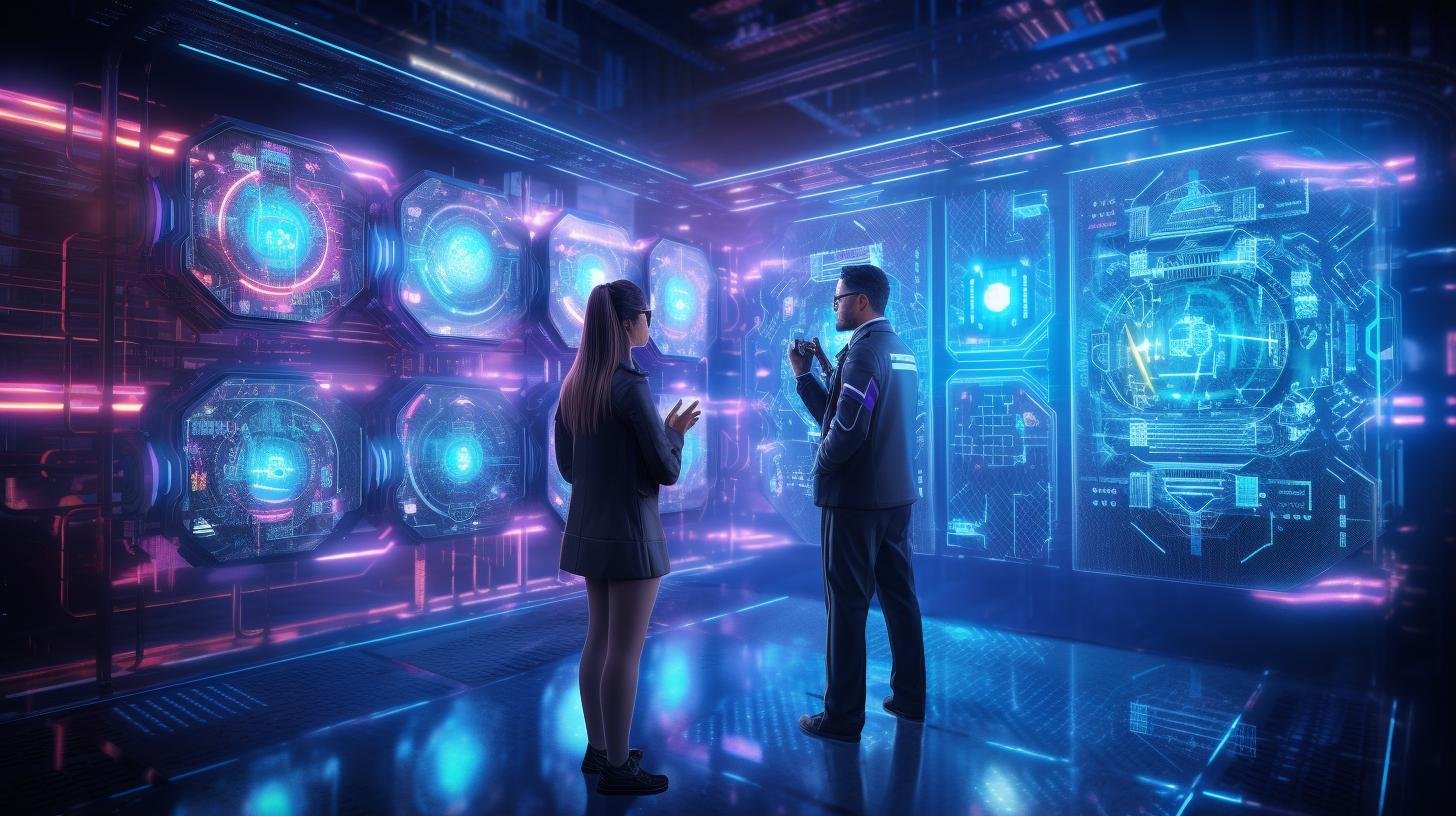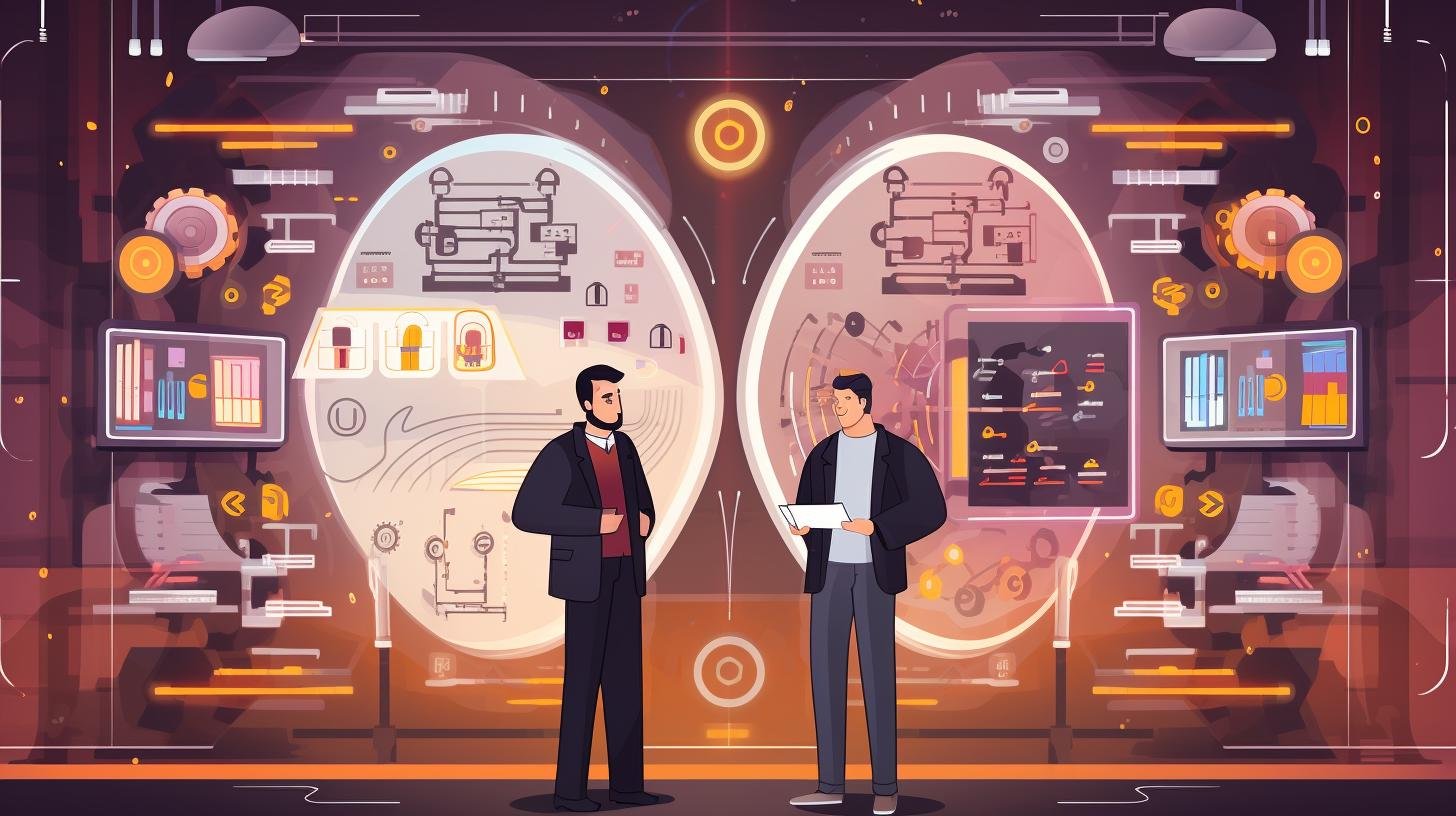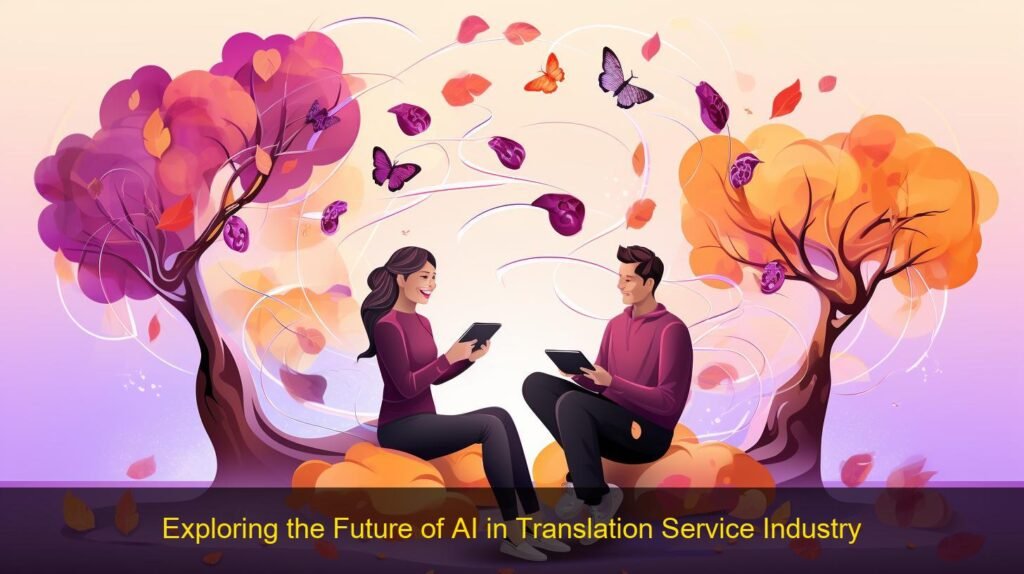Imagine the power of understanding and communicating in any language at the click of a button. This is not some far-fetched sci-fi movie plot, but the future of AI in translation service industry. The world is getting more interconnected day by day, and language barriers are a challenge that AI is ready to tackle. AI translation has the potential to revolutionize the way we communicate, work, and connect with each other.
AI has already made massive strides in areas like image recognition and personal assistants. Now, its sights are set on breaking down language barriers. Utilizing complex algorithms and machine learning, the aim is to produce not just literal translations, but also contextual ones. This means understanding cultural nuances, idioms, and even the tone of the conversation.
Advancements in Natural Language Processing (NLP) are at the forefront of AI translation. Companies are investing heavily in this technology to deliver fast, accurate, and cost-effective translations. Forget the days of laborious human translations; think real-time translations in the palm of your hand. Imagine the possibilities – businesses would be able to expand to new markets swiftly, international collaborations would be seamless, and tourism would be more comfortable than ever.
Remember the last time you were stuck in a foreign country, helplessly waving your hands, trying desperately to communicate? Well, the future of AI in the translation service industry promises to make those awkward moments a thing of the past.
Curious to see what this future looks like? Check out some of the Best Translation Services that are pioneering this change.
Table of Contents:

The Current State of AI in the Translation Service Industry
The translation service industry has seen a significant infusion of artificial intelligence (AI) in recent years. By employing AI, translators can automate a good portion of their work, increasing productivity and accuracy. But what exactly is AI translation?
Understanding AI Translation
To put it simply, AI translation is the use of artificial intelligence tools, like machine learning and natural language processing, to translate text or speech from one language to another. It’s often quicker than human translation, but it’s also important to note that it’s not perfect.
AI translation can handle straightforward, simple sentences quite well, but when it comes to complex sentences or idiomatic expressions, its accuracy can be hit or miss. It’s a technology that’s constantly improving, though, and its use in the translation service industry is growing rapidly.
The Application of AI in Today’s Translation Services
AI is primarily used in translation services for tasks that require speed and efficiency. It’s ideal for translating large volumes of text, such as documents or websites, in a relatively short amount of time.
AI is also used in real-time translation services, such as those found in language translation apps or customer service chatbots. These services use AI to provide instant translations for users, bridging language barriers in real time.
The Strengths and Weaknesses of Current AI Translation
AI translation offers several strengths, including speed, efficiency, and the ability to handle large volumes of text. Furthermore, its ability to learn from its mistakes through machine learning algorithms makes it a formidable tool in the translation service industry.
However, AI translation also has its weaknesses. It can struggle with colloquial expressions, cultural nuances, and context-based sentences. While it’s excellent for literal translations, it falls short when translating text that requires a deep understanding of the language’s intricacies. Despite these shortcomings, the future of AI in the translation service industry is bright and its potential is immense.

Advancements in AI that Will Influence the Future Translation Industry
Artificial Intelligence (AI) has been making leaps and bounds in recent years, especially in the field of language translation. The rapidly evolving technology can now understand, interpret, and even respond in multiple languages, changing the way we communicate on a global scale. Let’s dive into the recent innovations in AI that are set to shape the future of the translation service industry.
Recent Breakthroughs in AI Technology and Their Potential Impact
The advent of AI-powered language models like GPT-3 has shown great potential for translation services. With its ability to generate human-like text, it opens a whole new world of possibilities for cross-lingual understanding. It’s like having a highly proficient, multilingual assistant at your disposal.
Another exciting development is the rise of speech recognition technology. AI systems can now accurately transcribe spoken language into written text and vice versa, opening up new avenues for real-time language translation. These breakthroughs can drastically improve the speed, accuracy, and cost-effectiveness of translation services.
Integrating Machine Learning in Translation Services
Machine Learning (ML), a subset of AI, has been steadily integrated into translation services. ML algorithms can learn from vast amounts of data, allowing them to deliver increasingly accurate translations over time. These algorithms are capable of recognizing patterns, nuances, and colloquialisms in language, resulting in more natural and contextually accurate translations.
Moreover, by leveraging ML, translation services can offer personalized language models that adapt to an individual’s or organization’s specific terminologies and style, ensuring consistency in all translated content.
The Future of Neural Machine Translation (NMT)
Neural Machine Translation (NMT) is an AI-based approach to language translation that uses neural network models to predict the likelihood of a sequence of words, typically modeling entire sentences in a single integrated model. The result is a more fluid, human-like translation that takes context into account.
The future holds great promise for NMT. With ever-improving computational power and more refined algorithms, we can expect NMT to deliver near-human level translations. This technological breakthrough will revolutionize the translation service industry, breaking down language barriers like never before.

Anticipating the Future of AI in the Translation Service Industry
As we move forward into the digital age, we are increasingly becoming a global community. And in this global community, language translation services are more important than ever. With the advent of Artificial Intelligence (AI), the translation services industry is set to undergo a major transformation.
Predicted Developments in AI Translation
Already, AI has made significant strides in the field of translation. Machine translation systems like Google Translate have become more sophisticated, capable of handling complex language structures and idioms with ease. But this is just the beginning. In the future, we might see:
- Real-time translation: AI could enable real-time translation, allowing seamless communication between individuals who speak different languages.
- Context-aware translation: AI could become capable of understanding and translating language in its proper context, avoiding potential cultural faux pas.
- Increased accuracy: As AI learns and evolves, the accuracy of machine translations is expected to improve significantly, reducing the need for human intervention.
AI and Human Translation: A Cooperative Future?
While AI holds a lot of potential, it’s unlikely to make human translators obsolete. Language is nuanced and complex, and there will always be a need for the human touch. Instead, we might see a future where AI and human translators work in tandem. AI can handle the bulk of the translation work, while human translators can step in to handle nuanced, complex, or culturally sensitive translations. Such cooperation could lead to faster, more accurate, and more affordable translation services.
Anticipated Challenges in the Integration of AI into Translation Services
As promising as AI is, integrating it into the translation services industry won’t be without challenges. Integration costs could be high, and there could be resistance from human translators who fear job displacement. Additionally, achieving the level of accuracy needed for professional translation services could be challenging, especially for languages with complex grammar rules or low resource languages that don’t have much data available for machine learning.
Despite these challenges, the future looks promising. With ongoing advancements in AI and machine learning, the translation services industry is set to become faster, more efficient, and more globally connected.
The Impact of the Future of AI on the Translation Service Industry
Artificial Intelligence (AI) is no longer a far-off concept, but a tangible reality shaping numerous sectors, including the translation service industry. The leaps and bounds made by AI in the recent years have begun to significantly influence this particular industry.
How AI Will Transform Translation Services
AI technology is set to revolutionize the translation services in several ways. Firstly, it will bring speed and efficiency. AI-powered translation services can translate vast amounts of text in seconds, which would take human translators days or even weeks. This speed can be particularly beneficial in areas such as legal or medical translations where urgency can be critical.
Secondly, AI can offer consistency. While human translators can vary in their interpretations, AI, once trained, maintains consistency across numerous translations. However, the nuances of language and context can still be a challenge for AI, where humans outperform.
Future Opportunities and Threats for Translation Service Providers
AI presents both opportunities and threats for translation service providers. On the positive side, AI can help cut costs, increase speed, and improve consistency. It can also be used to automate routine tasks, freeing up human translators for more complex jobs.
On the flip side, the rise of AI could also mean a decrease in demand for human translators, particularly for more straightforward, literal translations. Balancing the use of AI with the irreplaceable human touch will be a key challenge for providers in the future.
The Possible Economic and Social Implications
From an economic perspective, AI could significantly reduce the costs associated with translation services. Businesses can save on labor costs and translate more content in less time, potentially opening up new markets and opportunities.
However, the social implications are more mixed. While AI can help break down language barriers and foster global communication, it could also lead to job displacement in the translation industry. Also, there’s the potential for loss of cultural nuances and subtleties that only human translators can accurately capture.
FAQs
- What is the role of AI in the translation service industry?
AI technology plays a significant role in the translation service industry. It helps in providing quick and accurate translations, which can save time and resources. With AI, businesses can translate vast amounts of data in different languages with ease. - How will the future of AI in translation service industry look like?
The future of AI in the translation service industry looks promising. There will be an increased use of AI in translation tools for more accurate translations. Also, the integration with machine learning could help in understanding context, idioms, and expressions better. - What challenges might AI face in the translation service industry?
AI in translation could face challenges like translations of idioms and cultural context that require human understanding. It might also face barriers in translating low-resource languages due to insufficient data. - How will AI improve the quality of translations?
AI can improve the quality of translations by reducing errors and providing more precise translations, especially for technical or specialized content. It can also learn from feedback and improve over time, which is a significant advantage. - What are some potential applications of AI in the translation service industry?
Potential applications of AI in translation include real-time transcription and translation of multilingual meetings, better localization of content for different markets, and improving accessibility for people with hearing impairments or language barriers.
Conclusion
The future of AI in the translation service industry is indeed a fascinating topic. As we’ve explored, it holds immense potential and can radically enhance the way we consume content in various languages. It cannot be denied that AI translation tools are already making impressive strides.
For instance, the uptake of real-time translation and the increased accuracy of AI translations. However, the journey does not stop here. As our technology evolves, we can expect AI to refine its understanding of nuanced language elements such as idioms, cultural references, and tone. This will, in turn, make translations more accurate and culturally sensitive.
Simultaneously, the emergence of AI in this industry also has its challenges. It brings up important questions around data security, job displacement, and the quality of translation. We’ve seen that while AI can make translation more accessible, efficient and cost-effective, it still has a long way to go to achieve the nuanced understanding of a human translator.
Ultimately, the future of AI in the translation industry presents a balancing act – leveraging the significant benefits of AI, while also navigating its challenges. As we move forward, it will be intriguing to see how this dynamic unfolds.



